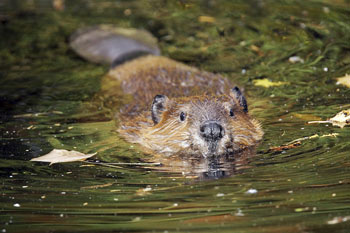Beavers May Be a Nuisance But They Might Save California Wetlands

California has lost more than 90 percent of its wetlands.The Central Valley wetlands have been reduced from more than 4 million acres to about 300,000 acres. But someday that may change by introducing beaver ponds to create and improve wetlands.Wetlands provide an abundance of food for small salmon, helping them adjust from freshwater to the ocean, and prevent flood waters from washing them away. “Beavers are an essential ecosystem engineer,” said Steve Zack in a study by Wildlife Conservation Society.
“[They] help repair degraded stream habitats and their dams and associated ponds recharge local water tables and create wetlands. Because climate change is likely to cause increasing droughts in the West, beavers may become especially helpful in allowing water sheds to act more like sponges.” Fisheries managers are seriously studying the advantages of beaver dams and ponds. “The reality is that they are very cost effective and that they do a tremendous job of restoring wetlands and restoring habitat and streams,” said Michael Pollock of the National Marine Fisheries Service’s Northwest Science Center. “So it’s kind of a no-brainer.”
Opponents of the program complain that beavers are a nuisance because they chew down trees, make dams, and flood private property.
California’s sturdy rodents were abundant in the 1800s but the numbers fell dramatically to around 1000 animalsdue to fur trading. In the 1920s and 1940s they lived in almost half the state’s counties, including in the Bay Area and Santa Cruz. By 1950, the population had grownto about 20,000. No one knows today’s population. “The problem though, is trying to figure out which regions have enough beavers to spare, so that some could be moved,” Pollack puzzled.
